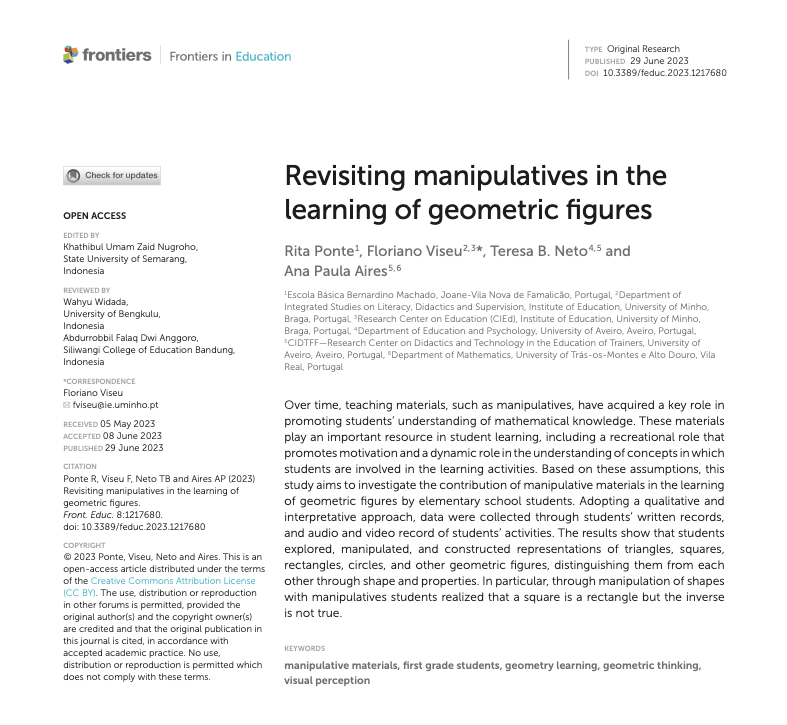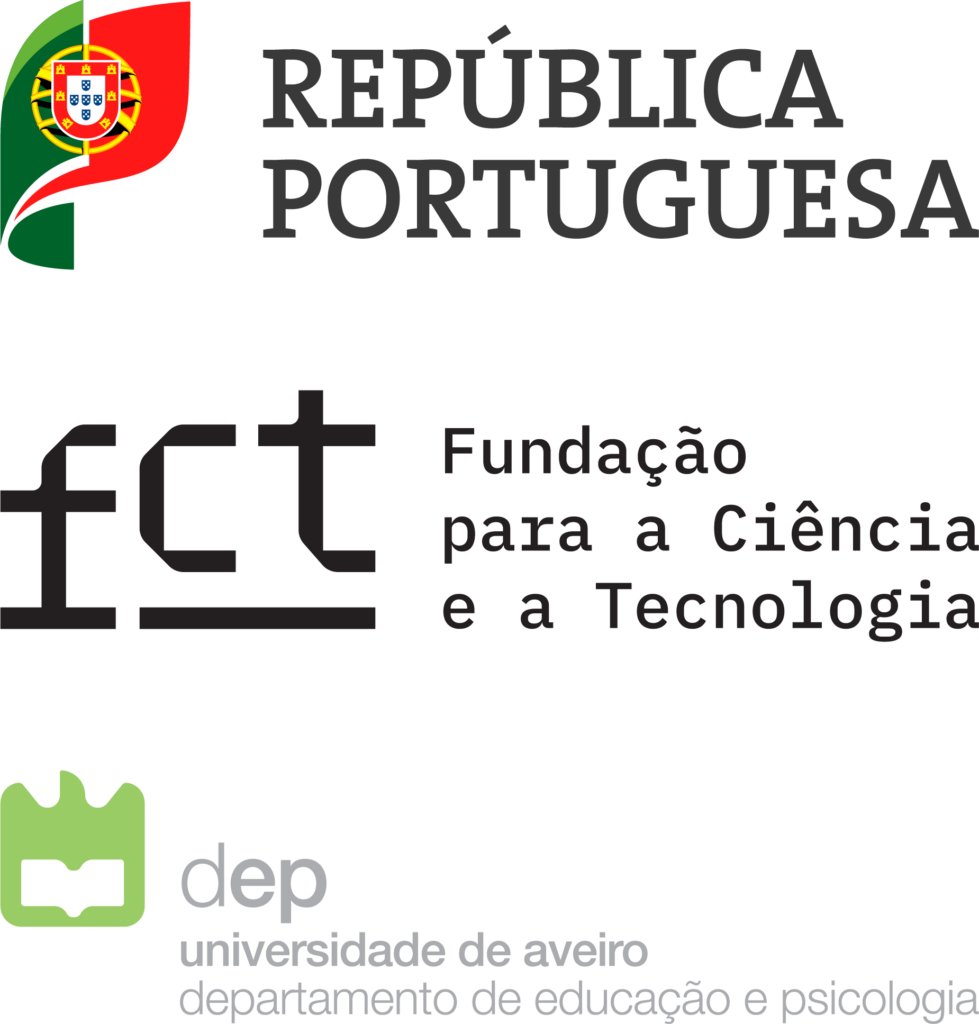Rita Ponte, Floriano Viseu, Teresa B. Neto (CIDTFF) & Ana Paula Aires (CIDTFF) | Frontiers in Education, 8, 1217680
Abstract:
Over time, teaching materials, such as manipulatives, have acquired a key role in promoting students’ understanding of mathematical knowledge. These materials play an important resource in student learning, including a recreational role that promotes motivation and a dynamic role in the understanding of concepts in which students are involved in the learning activities. Based on these assumptions, this study aims to investigate the contribution of manipulative materials in the learning of geometric figures by elementary school students. Adopting a qualitative and interpretative approach, data were collected through students’ written records, and audio and video record of students’ activities. The results show that students explored, manipulated, and constructed representations of triangles, squares, rectangles, circles, and other geometric figures, distinguishing them from each other through shape and properties. In particular, through manipulation of shapes with manipulatives students realized that a square is a rectangle but the inverse is not true.
– – – – –
Referência:
Ponte, R., Viseu, F., Neto, T.B., & Aires, A.P. (2023) Revisiting manipulatives in the learning of geometric figures. Frontiers in Education, 8, 1217680. https://doi.org/10.3389/feduc.2023.1217680





